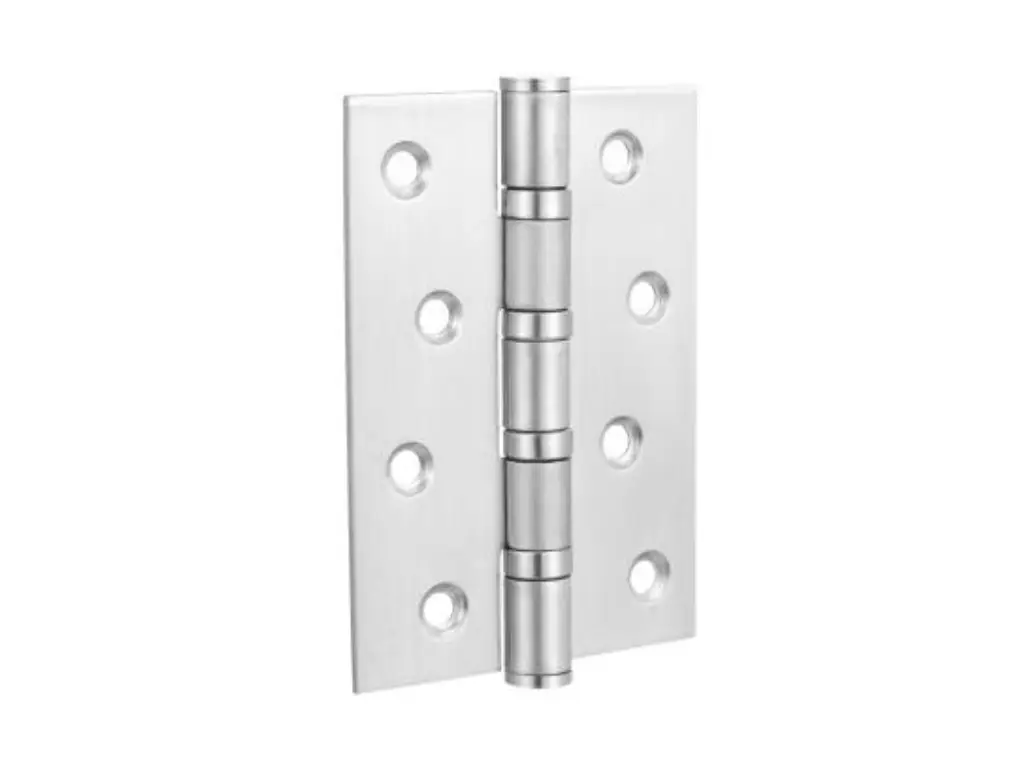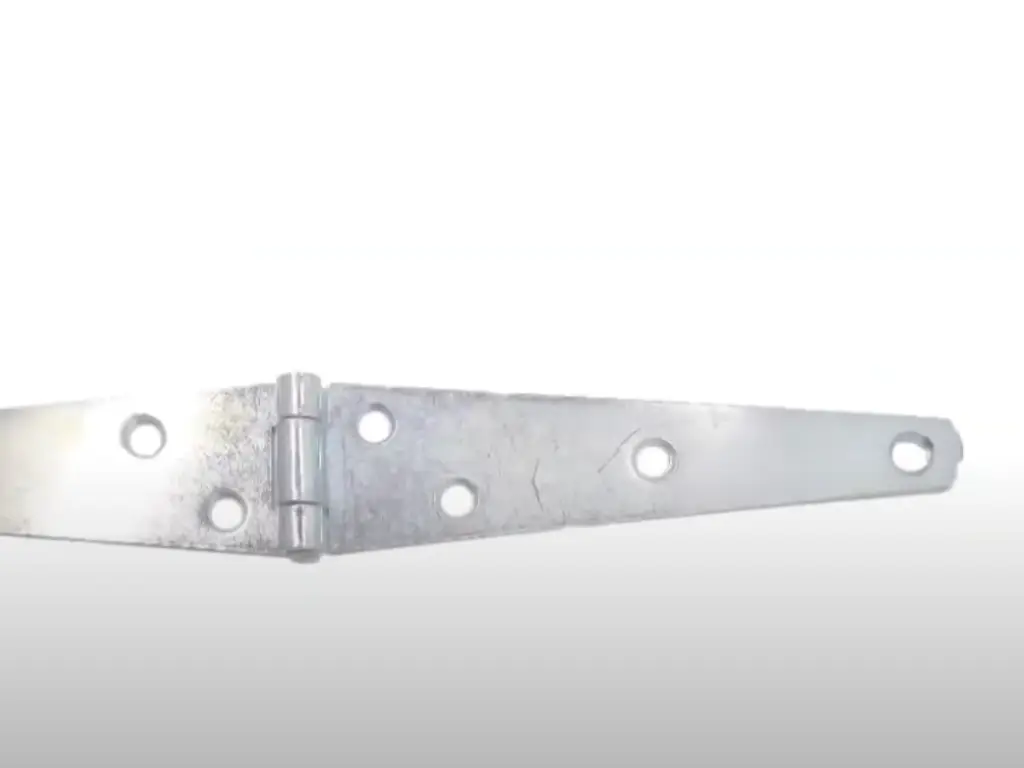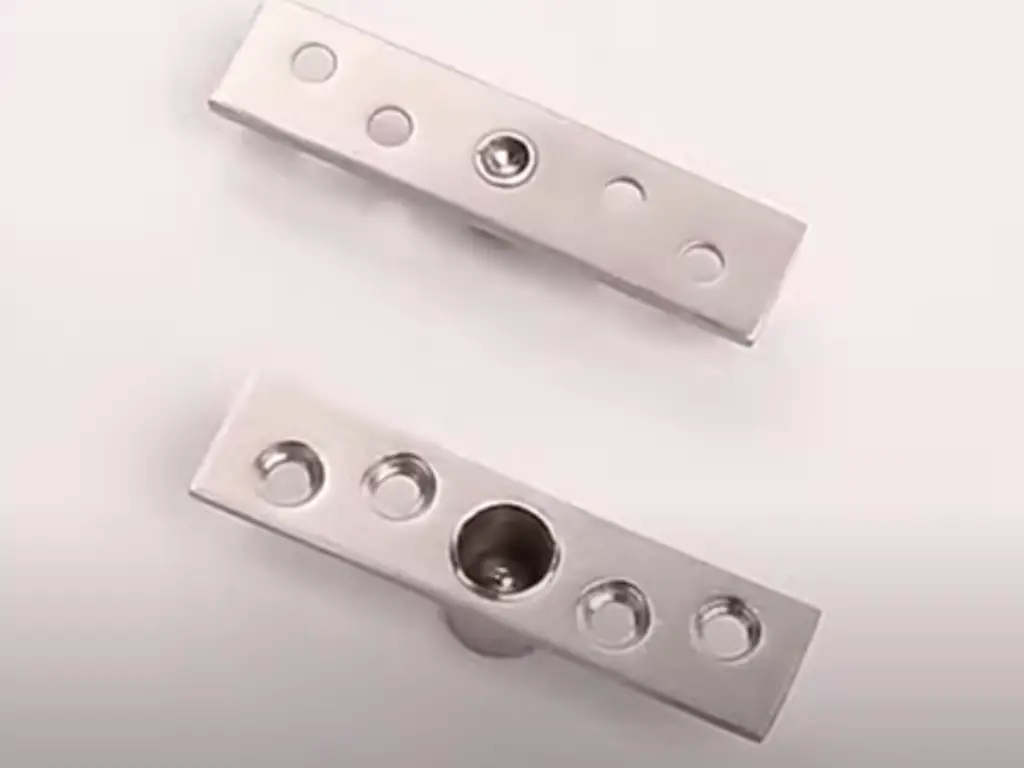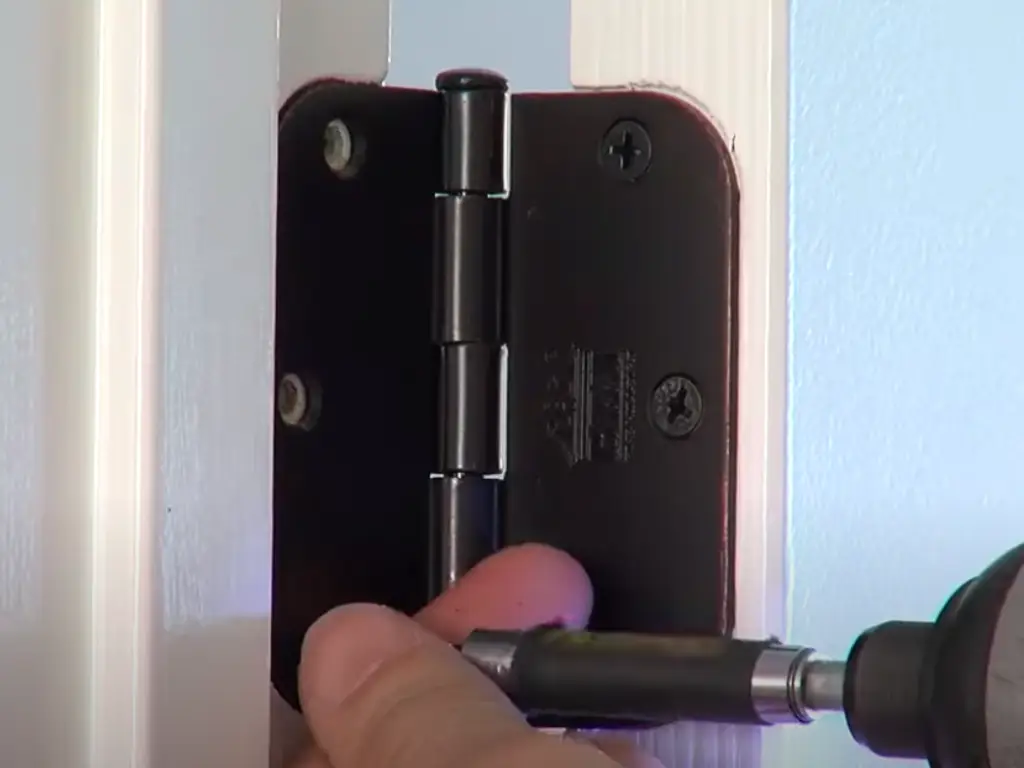The humble door hinge, often overlooked, is a critical component that ensures the smooth operation and security of any door. A door hinge selection determines whether doors will open smoothly or produce creaking sounds and sagging or complete failure. This comprehensive guide will explore the vast array of door hinge types available, delve into the key factors to consider when making your selection, and provide essential information on installation and maintenance. Whether you’re a homeowner embarking on a DIY project or a seasoned professional, understanding the nuances of door hinges is paramount.
Exploring the Variety: Common Types of Door Hinges Explained
Door hinges exist in a wider range of type of hinge than most people would expect. Different types of door hinges exist to serve particular uses which provide distinct advantages. Several popular door hinge varieties exist which we will examine in detail. Understanding the closed position of different hinges can also be important for aesthetic and functional reasons.

Butt Hinges
Butt Hinges represent the most frequently used door hinge type which functions as the fundamental component of door hardware systems. The hinge structure includes two rectangular leaves connected through a central pin. The door edge receives one leaf through mortising while the door jamb receives the other leaf through mortising. Butt hinges serve multiple purposes because they function effectively on doors of different weights both inside and outside buildings. Subtypes include:
- Square Corner Butt Hinges: The most common type, featuring square corners on the leaves.
- Round Corner Butt Hinges: Offer a softer aesthetic with rounded corners.
- Ball Bearing Butt Hinges: Incorporate ball bearings between the knuckles for smoother, quieter operation, especially suitable for heavy doors or high-traffic areas.
- Spring Butt Hinges: Feature a spring mechanism that automatically closes the door, often used for screen doors or fire doors.

Strap Hinges
Strap hinges feature long leaves which make them suitable for supporting heavy doors, including gates and barn doors and large wooden doors. The longer length of these hinges spreads the weight across the entire frame structure.

Pivot Hinges
Pivot hinges differ from standard door hardware because they enable doors to rotate from a central point which exists between the door frame and the door itself. The hinge design produces a simple modern appearance which works well for hidden doors.

Hydraulic Hinges (Soft-Close Hinges)
The hydraulic system built into these hinges provides a smooth and noiseless door closure to stop the door from slamming. These hinges find their primary application in kitchens and bathrooms together with other rooms that require sound reduction. The hinges operate as a soft mechanism which gently closes the door, ensuring a quiet closing.

Butterfly Hinges
Butterfly hinges get their name from the decorative leaf elements which resemble butterfly wings. These hinges find their applications in furniture doors and cabinet hinges and serve as decorative elements for interior doors. These hinges serve primarily decorative purposes rather than providing structural support. You might also find overlay hinges used on cabinets where the door sits on the face of the frame, creating an overlay.

Concealed Hinges
The hinges disappear entirely during door closure to deliver a smooth contemporary appearance. These hinges, also known as invisible hinges, serve high-end cabinetry and modern interior doors because they provide a clean aesthetic appearance. These hinges vanish from sight in the same manner as a well-kept secret.

Continuous Hinges (Piano Hinges)
The entire door and frame receives exceptional support and even weight distribution from continuous hinges which extend across their entire length. These hinges find their primary use in heavy-duty applications where they secure safe doors and doors in high-traffic commercial environments. For certain specialized applications, you might encounter an offset hinge or even flush hinges which sit completely within the door and frame when closed.
Key Factors to Consider When Choosing Your Door Hinges
Selecting the appropriate door hinge requires careful consideration of several factors:
- Door Weight: The hinges need to support the entire door weight to avoid sagging and failure. The weight of doors, which come in a wide range of sizes, determines the need for strong hinges with high load strength and possibly additional hinges.
- Door Thickness: The width of door leaves and screw length for secure mounting depends on the edge thickness of the door. The door thickness determines which hinge types can be used because concealed hinges need specific thickness requirements. The correct selection of components leads to a perfectly smooth and secure connection.
- Door Material:The choice of door materials, including wood metal and glass, determines which hinge types and installation procedures should be used. The installation of metal doors requires compatible metals to stop corrosion and glass doors typically use pivot hinges or patch fittings.
- Frequency of Use: High-traffic areas need ball-bearing hinges for their durability because these hinges provide smooth operation and extended lifespan when exposed to frequent stress.
- Security Needs: Exterior doors need hinges with non-removable pins or continuous hinges to achieve better security because they resist unauthorized entry attempts.
- Aesthetic Requirements: Hinges contribute to the overall style of a space. Consider the variety of finishes and style of the hinges, opting for concealed hinges for a seamless look or decorative hinges for visual interest.
- Budget: Balance performance needs with budgetary constraints. The price range depends on the hinge type together with its material composition and additional features. The market provides both durable premium hinges and cost-efficient alternatives suitable for basic applications.
- Swing Direction: The door swing direction requires selection of compatible hinges that function properly for left-handed or right-handed or inward or outward swinging doors. The market offers both non-hand specific and hand specific hinge products.
- Fire Rating: When using fire-rated doors it is essential to select fire-rated hinges because this ensures the door maintains its fire resistance while meeting safety requirements.
- Noise Reduction: Hydraulic soft-close hinges and ball-bearing hinges provide noise reduction benefits for noise-sensitive areas instead of regular hinges.
Matching Hinges to Your Specific Door Type & Application
A door hinge should match the exact requirements of its designated door application. This guide explains typical door varieties alongside their appropriate hinge selection:
- Interior Doors: For standard interior doors, butt hinges (typically 3.5 inches or 4 inches) are the most common and cost-effective choice. For heavier solid core doors or doors in high-traffic areas, consider ball-bearing butt hinges for smoother operation and increased durability. Butterfly hinges can add a decorative touch to interior doors.
- Exterior Doors: Exterior doors, especially those exposed to the elements, require more robust hinges made from durable and corrosion-resistant materials like stainless steel or brass. Heavy exterior doors require strap hinges for additional support while butt hinges measuring at least 4 inches work well for most applications. Security hinges with non-removable pins serve as an excellent security measure.
- Heavy Doors: Solid wood doors along with metal doors and security-enhanced doors become excessively heavy to operate. Heavy-duty butt hinges together with ball-bearing hinges or continuous hinges should be used for these applications to provide proper support and prevent sagging. The required number of hinges should be evaluated for potential increase.
- Lightweight Doors: Lightweight interior doors and cabinet doors can be supported by using either 3-inch butt hinges or butterfly hinges. The main priority in this case is to achieve smooth operation instead of maximizing load capacity.
- Barn Doors: The classic choice for barn doors uses strap hinges because these elements unite the rustic appearance with the required strength needed to support their heavy weight. Barn door hardware kits specifically designed for these applications include the correct dimensions of strap hinges together with mounting components.
- Glass Doors: Glass doors need specialized hardware consisting of pivot hinges or patch fittings that clamp onto glass surfaces without requiring traditional mortising methods. The secure mounting system of these hinges enables frameless glass doors to have a minimalist appearance.
- Cabinet Doors: Cabinet doors require three main types of hinges: butt hinges for smaller applications and concealed hinges for frameless designs and decorative butterfly hinges. The selection of hinges depends on both the chosen cabinet design and the required functional requirements.
Material Matters: Understanding Door Hinge Materials & Benefits
Door hinge material composition determines how long the hinge will last and its resistance to corrosion and operational effectiveness. The following list presents typical hinge materials used in construction:
- Steel (Carbon Steel): Carbon steel represents a strong cost-efficient material which serves as a common choice for hinges. The material suffers from rust and corrosion issues but remains appropriate for interior use when finished correctly.
- Steel (Stainless Steel): Stainless steel serves as an excellent material for exterior doors and bathrooms and other moisture-exposed areas because it provides exceptional corrosion protection. The material possesses both strength and durability which results in extended product lifespan. The higher initial price of this material becomes justified by its extended lifespan.
- Brass: Brass hinges offer good corrosion resistance and a classic, elegant appearance. These components find their use both for decorative applications and environments with salty air that can damage metal surfaces. Brass exhibits lower strength than steel, so it should be avoided for heavy doors.
- Bronze: Bronze hinges share similar corrosion resistance with brass while presenting a rich traditional appearance. Historical accuracy drives the use of these hinges in both traditional buildings and older residential structures. The lifespan of bronze exceeds that of brass.
- Aluminum Alloy: The lightweight aluminum alloy provides excellent corrosion resistance in addition to its low weight properties. These hinges find their use in lightweight door applications and situations that require weight reduction. The strength-to-weight ratio of these hinges is high but they do not match steel in terms of durability for heavy doors.
The choice of material should be guided by the door’s location (interior or exterior), the expected exposure to moisture, the weight of the door, and the desired aesthetic.
| Door Scenario | Door Location/Weight | Budget | Aesthetics | Recommended Hinge Material(s) |
| Standard Interior Door | Interior, Lightweight to Medium | Low to Medium | Standard | Carbon Steel (with finish) |
| Bathroom or Laundry Room Door | Interior, Medium | Medium | Standard | Stainless Steel, Brass |
| Exterior Door Exposed to Weather | Exterior, Medium to Heavy | Medium to High | Standard | Stainless Steel |
| Decorative Interior Door | Interior, Lightweight to Medium | Medium to High | Elegant, Traditional | Brass, Bronze |
| Modern, Minimalist Interior Door | Interior, Lightweight to Medium | Medium | Sleek, Modern | Stainless Steel, Aluminum Alloy |
| Heavy Solid Wood or Metal Door | Interior or Exterior, Heavy | Medium to High | Strength Focused | Stainless Steel, Carbon Steel |
| Coastal Environment Door | Exterior, Any Weight | High | Corrosion Resistance | Stainless Steel, Brass |
| Budget-Conscious Interior Door | Interior, Lightweight | Low | Functional | Carbon Steel (with finish) |
| High-Traffic Interior Door | Interior, Medium to Heavy | Medium to High | Durability Focused | Stainless Steel |
Why Our High-Quality Door Hinges Offer Superior Performancea
Choosing the right door hinge is crucial for the longevity and smooth operation of your doors. At Maxave, we engineer high-quality door hinges designed for superior performance. Crafted from premium-grade materials, our hinges offer exceptional durability and resistance to wear, ensuring years of reliable service. Whether you need robust stainless steel for exterior doors or smooth ball-bearing hinges for high-traffic areas, Maxave has the solution.
Our manufacturing process combined with rigorous quality control standards produces hinges which operate without fail to stop sagging and sticking and eliminate squeaking noises. Our product line includes concealed and soft-close hydraulic and heavy-duty hinges which provide design flexibility for any application.
Maxave hinges come with simple installation features and our team provides complete assistance throughout the installation process.Furthermore, Maxave focuses on efficiency. Our high production capacity ensures consistent supply, while our streamlined packaging helps lower shipping fees, providing you with cost savings. You can be confident in your investment with our 100% quality assurance and performance guarantee.By choosing Maxave, you invest in reliability, durability, and aesthetic appeal, ensuring your doors function flawlessly.
Ready to experience the Maxave difference? Browse our extensive catalog of door hinges and find the perfect solution for your project. Contact us today for a quote or to learn more about our offerings!
Step-by-Step Guide: How to Install Different Door Hinges
The correct installation of door hinges leads to proper door operation. The installation process follows these basic steps but the exact methods depend on the hinge type.
- The installation process requires a drill together with a screwdriver set containing Phillips and flathead options and measuring tape and pencil and chisel and hammer and safety glasses and possibly a level and a hinge jig.
- Standard hinge placement requires marks at 7 inches from the door top and 11 inches from its bottom. Heavier or taller doors require a third hinge placed in the middle. Draw the outline of the hinge leaves on both door edges and door jamb surfaces.
- Use a chisel and hammer (or a router with a hinge jig) to carefully cut away wood inside the marked areas until you create matching recesses (mortises) with the same width as the hinge leaves. The hinge will rest evenly against the surface because of this procedure.
- Position the hinge leaves inside the mortises that you have cut into both the door and jamb. Drill pilot holes that are slightly smaller than screw diameter to stop wood splitting.
- Use appropriate screws to fasten the hinge leaves onto the door surface. Begin by screwing the middle hinge first to achieve correct alignment.
- Position the door correctly against the jamb before securing the hinges. Secure the remaining hinge leaves to the jam by using screws. Begin screw installation with the middle hinge screw for each set.
- Open and close the door at a slow pace to verify its smooth movement. Check for proper fit between the door and jamb. Check the hinge alignment by adjusting screws to tighten or loosen them.
Safety Precautions Demand the use of safety glasses when operating power tools and hand tools. The door needs proper support during installation to avoid accidental drops.
Extending Lifespan: Essential Tips for Door Hinge Maintenance
Proper maintenance can significantly extend the lifespan of your door hinges and ensure smooth, quiet operation. Here are some essential tips:
- Lubrication: Regularly lubricate your door hinges with a silicone-based lubricant or penetrating oil. This will help prevent rust, reduce friction, and eliminate squeaking. Apply lubricant to the hinge pin and along the knuckles. This simple act is like giving your hinges a refreshing drink.
- Cleaning:Periodic cleaning of your hinges using proper methods will eliminate accumulated dust and dirt and grime. A soft brush or cloth serves as an effective tool for cleaning purposes. A combination of mild soap solution and proper drying will remove persistent buildup from the hinges.
- Checking and Tightening Screws: Loose hinge screws create door sagging and binding because they become loose. Check your hinge screws for looseness then tighten all loose screws during regular inspections. Stripped screw holes require you to use longer screws or apply wood filler and redrill new pilot holes.
- Preventing Rust: Outdoor hinges should use stainless steel or brass materials to stop rust formation. To treat rust appearance, you should first brush off the rust with a wire brush, then apply a rust inhibitor. Regular application of lubrication protects against rust formation.
By incorporating these simple maintenance practices into your routine, you can ensure that your door hinges continue to function smoothly and reliably for years to come.
Frequently Asked Questions About Selecting Door Hinges
The following list contains typical questions which homeowners and professionals ask during door hinge selection:
- What number of hinges should I install on a door? Standard interior doors that measure up to 80 inches in height need only two hinges for proper support. Three hinges provide the best support for heavier or taller doors as well as exterior doors to ensure their stability. Heavy doors exceeding a certain weight threshold need at least four hinges for proper support.
- Which size of butt hinge would be appropriate? Standard butt hinge dimensions include 3 inches, 3.5 inches, 4 inches and 4.5 inches. Most interior doors function best with 3.5-inch hinges. The majority of exterior doors together with heavier interior doors need 4-inch hinges for proper support. Heavy doors that are very thick require hinges with a minimum size of 4.5 inches or larger.
- What is the difference between a square corner and a round corner hinge? The main distinction between hinge leaves emerges from their corner design. Square corner hinges feature 90-degree sharp edges whereas round corner hinges display rounded edges. The selection between square and round corner hinges depends on appearance but pre-cut round corner recesses can be found in some door jambs.
- What are non-removable pin hinges? Non-removable pin hinges include a set screw which tightens to stop users from removing the hinge pin. The added security feature makes door removal from its frame significantly harder.
- Can I use different types of hinges on the same door? Different hinge types can be installed on the same door but it is not recommended for optimal performance. Different hinge types should not be combined on one door because their operational characteristics and load-bearing capacities may differ which could result in improper function or uneven wear.
The proper understanding of door hinges alongside their selection criteria and installation and maintenance practices will help you achieve reliable and secure door operation for extended periods. The selection of appropriate hinges represents a minor detail which produces major effects on door performance and service life.






